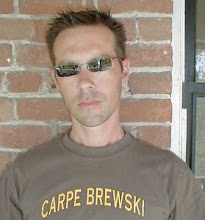Imagine a late spring afternoon on the west-trending toe slope of the Sandia Mountain foothills overlooking the rich, green Rio Grande valley in Albuquerque, New Mexico. The year is 1969. The date is Monday, March 31st. Only a few hours before, the nation had buried former president General Dwight D. Eisenhower.
A total of 13,767 baseball fans gathered together to celebrate the grand opening of the $1.4 million Albuquerque Sports Stadium (now Isotopes Park) by watching a major league exhibition game between the Cleveland Indians and the San Francisco Giants. Obviously a large contingent of dignitaries were on hand as it was reported that only 12,959 people paid for the privilege of scrambling for one of the 10,510 seats. The remaining 3,257 slower moving fans and late arrivers would stand (probably in line for hotdogs).

The game ended tied at 5- called after the end of the 8th inning due to darkness. Quite possibly a full game would have been played if the scheduled 3:00 pm start time hadn’t been pushed back an hour after Baseball Commissioner Bowie Kuhn ordered the suspension of all baseball activities until one hour following the burial of President Eisenhower.
Still, the inaugural event must have been some kind of spectacle!
The first player to cross home plate was San Francisco’s Bobby Bonds. This stellar image captured by Ray Cary for the Albuquerque Journal depicts the historic moment, as Indians catcher Joe Azcue is unable to tag the speedy Bonds.


Cleveland’s Tony Horton two-run blast in the bottom of the first inning was the first homerun hit in the Duke City’s shiny new “multipurpose” stadium. His rocket traveled an estimated 390-400 feet before it was deposited in the lava rocks beyond the fence in left-centerfield.

My favorite image (of those I’ve seen) of that day is without a doubt this shot of kids hanging over the Giants dugout attempting to get autographs.

According to witnesses present, 13-year-old Mike Garcia had to leave the game before it was completed for undisclosed reasons. His father Tom would later explain that Mike was heartbroken because he had failed to meet his hero, Willie Mays, in person. Thus, one can easily imagine Mike dragging his feet as he followed his family toward the exit of the ballpark; perhaps listening for clues of how the game was progressing- including cheering of the crowd and public address announcements. The youngster had no way of knowing that he was just a single crack of the bat away from cashing in a portion of his fifteen minutes of fame- the hard way.
As it turned out, Mays had been removed from the lineup in the seventh inning after going 0 for 3 at the plate. Having used the underground tunnels to make a quick escape via a waiting taxi, Willie surfaced near the exit, an estimated 10 feet away from Garcia. Amazed by this lucky development, the lad immediately made his move, determined to get an autograph from the Say Hey Kid before he slipped away.
Garcia never knew what hit him. It was a major league foul ball. Mike was struck above his right eye, and was believed to be unconscious before he hit the concrete. While Giants trainer Leo Hughes was summoned to attend to Garcia, Mays’ warm-up jacket was used as a pillow to comfort the kid. Sensing blood with their keen reporter instincts, Tribune photographers Al Cabral and Mark Bush began hovering over the scene looking for the perfect photo opportunities.


It is unclear why Garcia didn’t end up with an autograph. “You can bet I’m going to send him an autograph,” Mays reportedly told bystanders. “You get that young fellow’s name and address for me and I’ll see that he gets an autograph.” I can’t help but wonder if Mike ever heard from Mays after that.
One would think that getting clobbered with a foul ball and having your photo taken while you are laid out on the ground- then plastered in the newspaper the following day would be about as bad of a time one could experience at a baseball game. Well, during that same game, Tribune sports editor Carlos Salazar reported that Arthur Henry died in the stands of a heart attack.
Like I said, that must have been some kind of spectacle!

 .
. 
 .
. 










